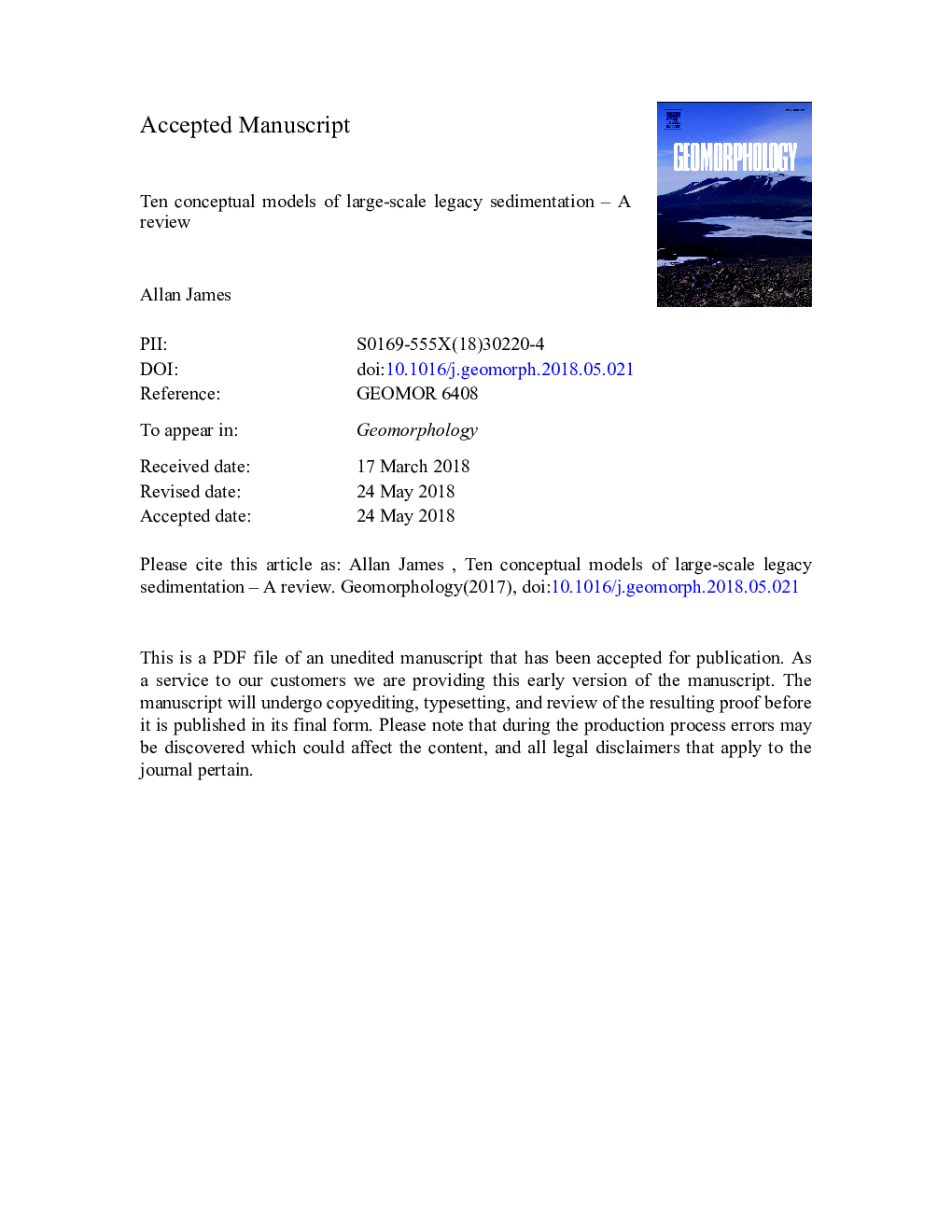| Article ID | Journal | Published Year | Pages | File Type |
|---|---|---|---|---|
| 8907973 | Geomorphology | 2018 | 67 Pages |
Abstract
Considerable interest has been directed toward the recognition and documentation of legacy sediment (i.e., anthropogenic sediment) in fluvial systems. Little has been written, however, to identify implicit or explicit theories about how these deposits form and evolve over decennial to centennial time scales. This review attempts to redress this void by examining conceptual models of the physical behavior and characteristics of catchment-scale anthropic fluvial sedimentation events. These concepts, which are not unique to anthropogenic sediment, include cascades, sediment delivery ratios, waves, aggradation-degradation episodes, residence times, budgets, connectivity, stream power, nonlinear dynamical systems, and geohistorical, geoarchaeological, and chronostratigraphic principles. A broad definition of legacy sediment as episodically produced anthropogenic sediment is adopted that includes early episodes of large-scale, human-induced sedimentation throughout the world. The models apply to a variety of environments, so the examples from North America following the introduction of European settlement can be related to other post-settlement sedimentation episodes elsewhere. During aggradation episodes, rates of erosion and sedimentation often increased an order of magnitude in response to land clearance for agriculture, timbering, or mining. These sediments may remain as a lasting geomorphic legacy that provides evidence of anthropogenic change and governs modern rates of sediment production and nonpoint source pollution.
Related Topics
Physical Sciences and Engineering
Earth and Planetary Sciences
Earth-Surface Processes
Authors
L. Allan James,
